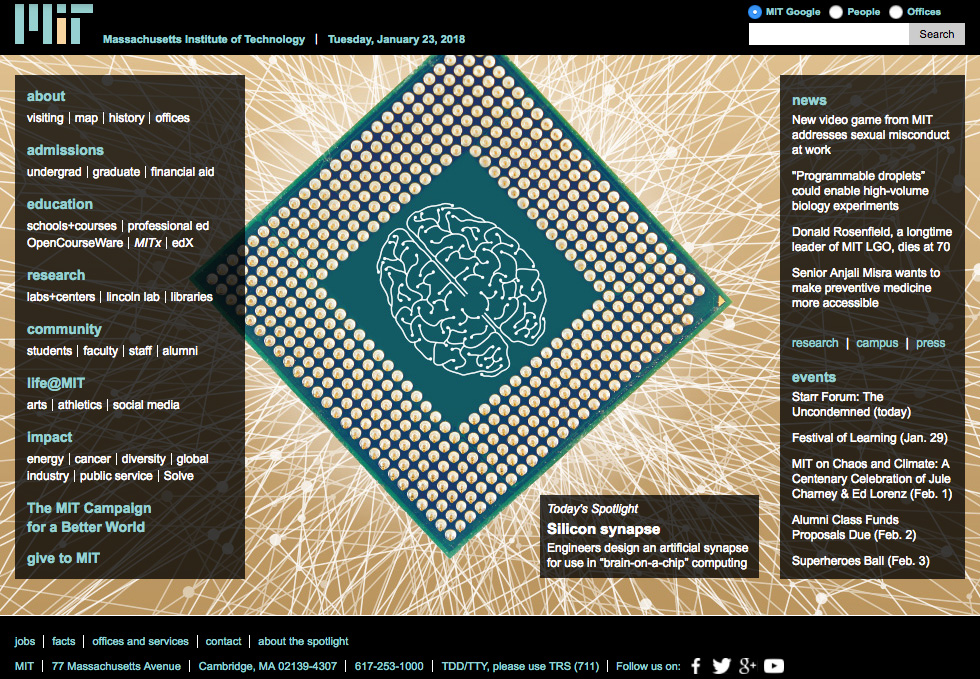Today's Spotlight features an illustration by Chelsea Turner, MIT.
Researchers in the emerging field of "neuromorphic computing" have attempted to design computer chips that work like the human brain. Instead of carrying out computations based on binary, on/off signaling, like digital chips do today, the elements of a "brain on a chip" would work in an analog fashion, exchanging a gradient of signals, or "weights," much like neurons that activate in various ways depending on the type and number of ions that flow across a synapse.
Read the full story on MIT News.
Researchers in the emerging field of "neuromorphic computing" have attempted to design computer chips that work like the human brain. Instead of carrying out computations based on binary, on/off signaling, like digital chips do today, the elements of a "brain on a chip" would work in an analog fashion, exchanging a gradient of signals, or "weights," much like neurons that activate in various ways depending on the type and number of ions that flow across a synapse.
Read the full story on MIT News.




